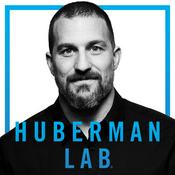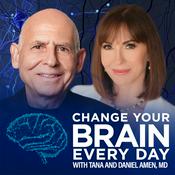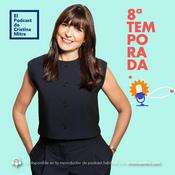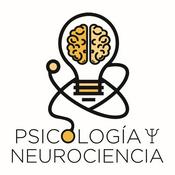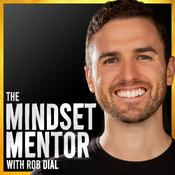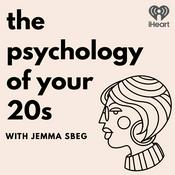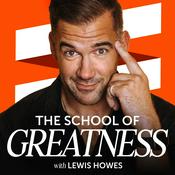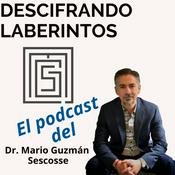Episodios disponibles
5 de 426
- #376 - AMA #78: Longevity interventions, exercise, diagnostic screening, and managing high apoB, hypertension, metabolic health, and moreView the Show Notes Page for This Episode Become a Member to Receive Exclusive Content Sign Up to Receive Peter's Weekly Newsletter In this "Ask Me Anything" (AMA) episode, Peter tackles a wide-ranging set of listener questions spanning lifespan interventions, exercise, cardiovascular risk reduction, time-restricted eating, blood pressure management, hormone therapy, diagnostics, and more. Peter reveals the single most important lever for extending healthspan and lifespan, and explains how he motivates midlife patients using the Centenarian Decathlon framework. He discusses the importance of addressing high apoB and cholesterol even in metabolically healthy individuals with calcium scores of zero, how to manage high blood pressure, and how to accurately evaluate metabolic health beyond HbA1c. Additional topics include time-restricted eating, practical considerations around ultra-processed foods, nuanced approaches to HRT for women and TRT for men, and why early and expanded screening for chronic disease—colonoscopy, PSA, coronary imaging, low-dose CT—can be lifesaving. He also offers insights into treating prediabetes, crafting exercise programs for those short on time, and safely incorporating high-intensity training in older adults. If you're not a subscriber and are listening on a podcast player, you'll only be able to hear a preview of the AMA. If you're a subscriber, you can now listen to this full episode on your private RSS feed or our website at the AMA #78 show notes page. If you are not a subscriber, you can learn more about the subscriber benefits here. We discuss: Introducing a wide-ranging AMA: practical perspectives on lifespan interventions, metabolic health, diet, hormones, diagnostics, and more [2:45]; Why exercise is the most powerful single intervention for lifespan and healthspan [4:15]; How Peter motivates midlife patients to prioritize exercise [6:00]; Why lifespan and healthspan should not be treated as competing priorities and how choosing sustainable interventions benefits both [9:30]; Why high apoB deserves treatment even in a metabolically healthy patient with a CAC score of zero [14:00]; Managing hypertension: ideal targets for blood pressure, lifestyle levers, and why early pharmacology matters [18:15]; Assessing metabolic health beyond HbA1c: fasting insulin, triglycerides, lactate, zone 2, and more [23:30]; How to avoid common self-sabotaging patterns by choosing sustainable habits over extreme health interventions [26:00]; Time-restricted eating: minimal effect beyond calorie control, implications for protein intake, and practical considerations for implementing it [28:00]; Ultra-processed foods: definitions, real-world risks, and practical guidelines for smarter consumption [30:30]; How women should prepare for menopause and think about hormone replacement therapy: early planning, symptom awareness, and guidance on HRT [36:45]; Testosterone replacement for aging men: indications, benefits, and safe clinical management [39:45]; Why Peter recommends earlier and more aggressive screening tests than guidelines suggest: colonoscopies, coronary imaging, PSA, Lp(a), and low-dose CT scans, and more [43:30]; Full-body MRI screening: benefits, limitations, potential false positives, and the importance of physician oversight [47:15]; Prediabetes: individualized treatment strategies using tailored combinations of nutrition, sleep, and training interventions [51:00]; Time-efficient training plans for people with only 30 minutes per day to exercise [53:00]; How to safely introduce high-intensity exercise for older adults [55:00]; Timed dead hangs and ripping phone books: a playful look at Peter's early attempts to impress his wife [57:15]; Peter's carve out: The Four Kings documentary about a golden era of boxing [1:01:15]; and More. Connect With Peter on Twitter, Instagram, Facebook and YouTube--------22:17
- #375 - Ketogenic diet, ketosis & hyperbaric oxygen: metabolic therapies for weight loss, cognition, Alzheimer's & more | Dom D'Agostino, Ph.D.View the Show Notes Page for This Episode Become a Member to Receive Exclusive Content Sign Up to Receive Peter's Weekly Newsletter Dom D'Agostino is a neuroscientist and professor at the forefront of metabolic therapies, including ketogenic diets, exogenous ketones, and hyperbaric oxygen. In this episode, Dom breaks down nutritional versus supplemental ketosis, defines meaningful ketone thresholds, and outlines practical ways to achieve ketosis. He explains how a ketogenic diet can support metabolic health and weight loss, and advises on how to maintain adequate protein and avoid common mistakes. Dom surveys the growing landscape of exogenous ketones—from salts and esters to 1,3-butanediol—and effective pairings like caffeine, MCT oil, and alpha-GPC. He highlights the role of ketogenic therapy in cancer (particularly glioblastoma) and its promise for neurodegenerative diseases. The conversation also covers recommended hyperbaric oxygen protocols for brain injuries and cognitive function, situations where fasting or ketones offer cognitive and anti-inflammatory benefits, and touches on the carnivore diet as a ketogenic variant with potential relevance for autoimmune and metabolic conditions. We discuss: Dom and Peter's shared interest in ketosis, and Dom's scientific journey [2:30]; Dom's work for the Navy on oxygen toxicity [7:00]; Nutritional ketosis defined: physiology, biomarkers, and how fasting and diet generate therapeutic ketones [15:00]; The historical roots of ketogenic diets in epilepsy treatment, and evidence showing ketones reduce seizure activity and strengthen brain resilience [19:00]; Dom's personal experience on the ketogenic diet: tracking macros, getting enough protein, and monitoring ketone levels [24:15]; Using a ketogenic diet for weight loss: Dom's guidance on protein, fiber, calorie tracking, lipid monitoring, and more [31:00]; Protein on ketogenic diets: Dom's rationale for higher intake and muscle preservation [38:00]; Incorporating carbohydrates into keto: timing, high-fiber foods, and other considerations [41:30]; The carnivore diet: whether this diet induces ketosis, how it functions metabolically, and why it may help individuals with autoimmune conditions [44:15]; Early exogenous ketones: how 1,3-butanediol works, its liver toxicity risk, and why ketone esters replaced it [48:15]; The progression of exogenous ketones: why BHB monoesters and ketone salts emerged as better alternatives to 1,3-butanediol for ketone supplementation [59:30]; Ketone salts: easing the transition into ketosis, dosing, and how they compare to ketone esters [1:04:00]; The differences between D- and L-β-hydroxybutyrate, and how racemic mixtures may elevate ketones longer and offer unique biological effects [1:09:30]; How ketosis may boost NAD, and why NAD supplements have fallen short so far [1:16:30]; Emerging evidence for using a ketogenic diet to treat anorexia and other psychiatric disorders [1:20:30]; Potential cognitive and performance benefits of ketone supplementation, and why pushing ketones too high can be dangerous [1:23:45]; Applications for ketone esters, and why ketone salts or MCT-blended formulations may be safer and more practical for most people [1:29:15]; The role of a ketogenic diet in treating cancer [1:34:45]; The potential of a ketogenic diet for treating Alzheimer's disease [1:45:45]; Tools for cognitive enhancement: ketones, alpha-GPC, MCT, caffeine, strategic fasting, and more [1:53:45]; Hyperbaric oxygen therapy for concussion, TBI, PTSD, and cognitive function, including protocols and dosing approaches [1:55:30]; Peter's takeaways, recommended products, and additional resources to learn more [2:03:00]; and More. Connect With Peter on Twitter, Instagram, Facebook and YouTube--------2:08:25
- #374 - The evolutionary biology of testosterone: how it shapes male development and sex-based behavioral differences, | Carole Hooven, Ph.D.View the Show Notes Page for This Episode Become a Member to Receive Exclusive Content Sign Up to Receive Peter's Weekly Newsletter Carole Hooven is a human evolutionary biologist whose research centers on testosterone, sex differences, and behavior. In this episode, she explores how prenatal testosterone orchestrates male development in the body and brain, how early hormonal surges shape lifelong behavioral tendencies, and what rare natural experiments—such as 5-alpha-reductase deficiency—reveal about the biology of sex differentiation. She discusses distinct male and female aggression styles through an evolutionary lens, how modern environments interact with ancient competitive drives, and the implications of attempting to suppress them. The conversation also covers testosterone across the lifespan, the role of hormone therapy in both men and women, and Carole's own experience after surgical menopause, culminating in a broader discussion of masculinity, cultural narratives, and the consequences of denying biological sex differences. We discuss: How Carole became interested in exploring the biological and evolutionary roots of sex differences and the role of testosterone [2:30]; How testosterone and other hormones influence sex differences in aggression and behavior across species [9:45]; How chromosomes, the SRY gene, and early hormones direct embryonic sexual differentiation [12:15]; A stark contrast of male social bonding compared to females, and evolutionary parallels in chimpanzees [19:30]; How hormones like DHT shape sexual differentiation, and how 5⍺-reductase deficiency reveals the distinct roles of these hormones [22:45]; How sex chromosomes and prenatal testosterone shape early brain development and explain sex differences in childhood behavior [31:30]; How gamete differences shape reproductive strategies, energetic costs, and sex-specific behavior [42:30]; How evolutionary biology shapes sex differences in play, aggression, and conflict resolution (and how modern environments and cultural messaging can disrupt those patterns) [49:00]; Why males commit disproportionately more violent crime, and how cultural and environmental forces shape aggression [1:01:00]; Why females evolved different behavioral strategies: nurturing, risk aversion, and the cultural norms that override biology [1:04:00]; Whether male aggression is still necessary in modern society, why the underlying biological drives persist, and how modern society redirects these drives [1:06:30]; How testosterone levels naturally shift to support fatherhood and caregiving [1:13:30]; How testosterone shapes male mating strategies, and why long-term pair-bonding persists even when reproduction is no longer at stake [1:18:30]; The distinct roles of estrogen in male development, mood, libido, and muscle [1:25:00]; How evolution, health, lifestyle, and androgen receptor biology shape modern testosterone replacement therapy (TRT) [1:34:15]; Carole's experience with hormone replacement therapy (HRT), and the risks associated with TRT in younger men [1:45:15]; How Carole rebuilt after controversy: leaving academia and recommitting to scientific honesty [1:51:30,]; Carole's next book: examining masculinity, cultural narratives, and the cost of denying biological sex differences [1:57:30]; and More. Connect With Peter on Twitter, Instagram, Facebook and YouTube--------2:05:20
- The impact of gratitude, serving others, embracing mortality, and living intentionally | Walter Green (#288 rebroadcast)View the Show Notes Page for This Episode Become a Member to Receive Exclusive Content Sign Up to Receive Peter's Weekly Newsletter Walter Green is a remarkable philanthropist, mentor, author of This Is the Moment!, and founder of the impactful "Say It Now" movement. In this episode, Walter delves into the unique insights gained from his challenging upbringing, discusses embracing mortality, and highlights the mindset of "finishing strong." He shares insights on intentionality, thinking in reverse, saying "no," prioritizing relationships, and the essence of focusing on others. The conversation focuses on the "Say It Now" movement, which stresses the importance of expressing sentiments to loved ones well before the end of life. We discuss: How Peter and Walter met through Ric Elias [3:30]; The unique perspectives and life lessons provided by Walter's challenging childhood [6:00]; Walter's harrowing experience with a sudden mental breakdown and his subsequent recovery with the help of therapy [12:15]; A diverse professional journey ending in great success [19:15]; The birth of a movement: celebrating friendships through public tributes and expressing gratitude to those who have shaped your life's journey [23:30]; Intentionality, thinking in reverse, saying "no", and other guiding principles for Walter [30:45]; Walter's global journey of gratitude on his 70th birthday, visiting friends, and creating memorable experiences [40:15]; The profound impact of acknowledging and expressing gratitude for the people who contribute to our lives [47:15]; The key elements for creating meaningful connections and cultivating deep, authentic friendships [53:15]; The "Say It Now" movement: the inspiration behind the remarkably impactful initiative [59:15]; What "finishing strong" means to Walter [1:08:15]; Finding peace at the end of life through expressing gratitude and finding purpose in serving others [1:16:45]; Resources to learn about "Say It Now" [1:27:00]; and More. Connect With Peter on Twitter, Instagram, Facebook and YouTube--------1:31:01
- #373 – Thyroid function and hypothyroidism: why current diagnosis and treatment fall short for many, and how new approaches are transforming care | Antonio Bianco, M.D., Ph.D.View the Show Notes Page for This Episode Become a Member to Receive Exclusive Content Sign Up to Receive Peter's Weekly Newsletter Antonio Bianco is a world-renowned physician-scientist and expert in thyroid physiology and metabolism. In this episode, Antonio explores the complex biology of thyroid hormone production, conversion, and regulation—highlighting how deiodinase enzymes modulate hormone activity at the tissue level and why that matters for interpreting lab results. He discusses the shortcomings of relying solely on TSH as a marker of thyroid function, the ongoing debate around combination therapy with T3 and T4 versus standard T4 treatment, and how genetics, tissue sensitivity, and individual variability influence thyroid hormone metabolism. The conversation also examines how hypothyroidism affects energy, mood, cognition, and longevity; why some patients remain symptomatic despite "normal" labs; and how future research could reshape treatment paradigms. We discuss: How the thyroid produces, stores, and activates hormones like T4 and T3 to finely regulate thyroid activity [2:45]; How fasting alters thyroid hormones to conserve energy [12:45]; Action of the deiodinases: how D1, D2, and D3 enzymes control the activation and inactivation of thyroid hormones [19:15]; The normal function of thyroid hormone and the roles of the hypothalamus, pituitary gland, and deiodinases in maintaining hormonal balance [23:30]; Why understanding thyroid physiology is essential for proper diagnosis and treatment of hypothyroidism [33:45]; Testing for thyroid hormones: understanding free vs. total levels, the limitations of current T3 assays, best practices, and more [36:00]; Genetic and sex-based variability in thyroid hormone regulation and their limited clinical significance [43:45]; Hyperthyroidism: causes, symptoms, diagnosis, and treatment options [46:00]; Hypothyroidism: diagnosis and autoimmune causes of hypothyroidism [56:30]; More on hypothyroidism: diagnostic biomarkers, antibody patterns, and non-autoimmune presentations [1:05:00]; Thyroid hormone replacement therapy [1:15:15]; More on thyroid replacement strategies: exploring the evidence gaps, mortality signals, effects on lipids, and more [1:28:00]; Hypothyroidism basics: causes, antibody implications (including pregnancy), and how to make the diagnosis before choosing therapy [1:35:15]; Thyroid medication: compounded controlled-release T3, brand name versus generic, and what Antonio prescribes to newly diagnosed hypothyroid patients [1:42:45]; Redefining treatment success: why normalizing TSH isn't always enough for patients with hypothyroidism [1:54:45]; Case studies: analysis of two unusual cases of thyroid disease [1:57:00]; Dangers of supplementing with high levels of iodine, and female-specific risk of thyroid disease [2:05:45]; Case study of a patient who presents with elevated TSH but no symptoms [2:09:30]; How future research could reshape treatment, and Antonio's new book called "Rethinking Hypothyroidism" [2:13:15]; and More. Connect With Peter on Twitter, Instagram, Facebook and YouTube--------2:20:06
Más podcasts de Salud y forma física
Podcasts a la moda de Salud y forma física
Acerca de The Peter Attia Drive
Expert insight on health, performance, longevity, critical thinking, and pursuing excellence. Dr. Peter Attia (Stanford/Hopkins/NIH-trained MD) talks with leaders in their fields.
Sitio web del podcastEscucha The Peter Attia Drive, Durmiendo y muchos más podcasts de todo el mundo con la aplicación de radio.net
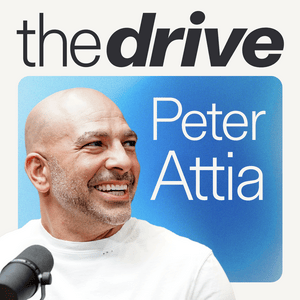
Descarga la app gratuita: radio.net
- Añadir radios y podcasts a favoritos
- Transmisión por Wi-Fi y Bluetooth
- Carplay & Android Auto compatible
- Muchas otras funciones de la app
Descarga la app gratuita: radio.net
- Añadir radios y podcasts a favoritos
- Transmisión por Wi-Fi y Bluetooth
- Carplay & Android Auto compatible
- Muchas otras funciones de la app


The Peter Attia Drive
Escanea el código,
Descarga la app,
Escucha.
Descarga la app,
Escucha.







